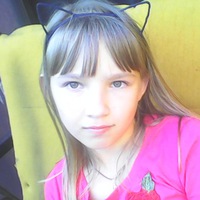
1) Дайте определение понятий а) наружное оплодотворение в) внутреннее оплодотворение 2) какие из
перечисленных животных развиваются без превращение ? Нереида, дождевой червь, паук-крестовик, кузнечик, майский жук, лягушка, ящерица, воробей 0
0
 0
0
Ответы на вопрос
 Внимание! Ответы на вопросы дают живые люди. Они могут содержать ошибочную информацию, заблуждения, а также ответы могут быть сгенерированы нейросетями. Будьте внимательны. Если вы уверены, что ответ неверный, нажмите кнопку "Пожаловаться" под ответом.
Внимание! Ответы на вопросы дают живые люди. Они могут содержать ошибочную информацию, заблуждения, а также ответы могут быть сгенерированы нейросетями. Будьте внимательны. Если вы уверены, что ответ неверный, нажмите кнопку "Пожаловаться" под ответом.

Оплодотворение – это процесс слияния мужской и женской половых клеток.
При внутреннем оплодотворении слияние половых клеток происходит внутри организма. Оно характерно для пресмыкающихся, птиц, млекопитающих.
При внешнем оплодотворении гаметы сливаются вне организма (например, у рыб и многих земноводных этот процесс протекает в воде).
 0
0
 0
0

Definition of External Fertilization and Internal Fertilization
External fertilization is a reproductive process in which the fusion of gametes (sperm and egg) occurs outside the body of the organism. This type of fertilization is common in aquatic environments, where organisms release their gametes into the water, allowing them to meet and fertilize externally. External fertilization is typically observed in many fish, amphibians, and some invertebrates [[1]].
Internal fertilization, on the other hand, is a reproductive process in which the fusion of gametes occurs inside the body of the organism. In this case, the male transfers sperm directly into the female's reproductive tract, where fertilization takes place. Internal fertilization is common in terrestrial organisms and some aquatic species. It provides several advantages, such as protection of gametes from external environment and increased chances of successful fertilization [[2]].
Animals that Develop Without Metamorphosis
Among the animals you listed, the following species develop without undergoing metamorphosis:
1. Nereida (also known as a bristle worm or polychaete worm) is a marine annelid worm that typically undergoes direct development without metamorphosis. The larvae of nereids resemble miniature versions of the adults, and they grow and develop into adults without significant changes in body form [[3]].
2. Earthworm (also known as a rainworm or nightcrawler) is a terrestrial annelid worm that does not undergo metamorphosis. Earthworms hatch from eggs as small versions of adults and continue to grow and develop without undergoing any dramatic changes in body structure [[4]].
3. Cross spider (also known as a garden spider or orb-weaving spider) is an arachnid that does not undergo metamorphosis. After hatching from eggs, spiderlings resemble miniature versions of adult spiders and gradually grow and molt to reach their adult size and reproductive maturity [[5]].
4. Grasshopper (also known as a locust) is an insect that undergoes incomplete metamorphosis. Grasshoppers hatch from eggs as nymphs, which resemble miniature versions of adults. The nymphs go through several molting stages, gradually growing and developing into winged adults without undergoing a complete transformation of body form [[6]].
5. May beetle (also known as a cockchafer or June bug) is a type of scarab beetle that undergoes complete metamorphosis. May beetle larvae, commonly known as white grubs, hatch from eggs and develop underground. They go through several larval stages before pupating and eventually emerging as adult beetles. The transformation from larvae to adults involves significant changes in body structure and appearance [[7]].
6. Frog is an amphibian that undergoes complete metamorphosis. Frogs start their life cycle as aquatic tadpoles, which hatch from eggs. Tadpoles have gills and a tail for swimming. As they grow, they undergo metamorphosis, developing lungs, legs, and a more adult-like body structure. Eventually, they transition from an aquatic lifestyle to a terrestrial one as adult frogs [[8]].
7. Lizard (specifically, the common lizard or European common lizard) is a reptile that undergoes incomplete metamorphosis. Lizard hatchlings resemble miniature versions of adults and gradually grow and develop without significant changes in body form. They shed their skin periodically as they grow, but their overall body structure remains relatively constant [[9]].
8. Sparrow (specifically, the house sparrow) is a bird that does not undergo metamorphosis. Sparrows hatch from eggs as featherless, blind hatchlings. They grow rapidly and develop feathers, wings, and other adult features over time, but their overall body structure remains relatively consistent throughout their development [[10]].
Please let me know if there's anything else I can help you with!
 0
0
 0
0
Топ вопросов за вчера в категории Биология
Последние заданные вопросы в категории Биология
-
Математика
-
Литература
-
Алгебра
-
Русский язык
-
Геометрия
-
Английский язык
-
Химия
-
Физика
-
Биология
-
Другие предметы
-
История
-
Обществознание
-
Окружающий мир
-
География
-
Українська мова
-
Информатика
-
Українська література
-
Қазақ тiлi
-
Экономика
-
Музыка
-
Право
-
Беларуская мова
-
Французский язык
-
Немецкий язык
-
МХК
-
ОБЖ
-
Психология
-
Физкультура и спорт
-
Астрономия
-
Кыргыз тили
-
Оʻzbek tili


















